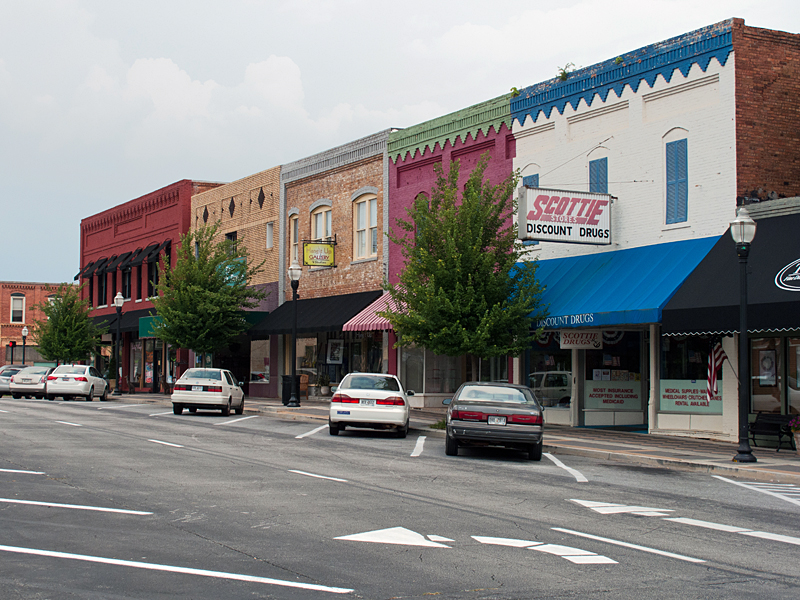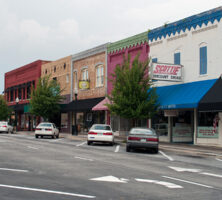Hartwell is the seat of Hart County, which was named for Revolutionary War (1775-83) heroine Nancy Hart. The town narrowly escaped being called Nancyville. Located some 100 miles northeast of Atlanta near the South Carolina border, it was incorporated in 1856 and quickly became the supply and processing center for the local agricultural economy.

Courtesy of UGA Archway Partnership
The town was spared much of the direct devastation accompanying the Civil War (1861-65). And with the state’s “redemption” from Reconstruction, the community returned to a political complacency that lasted until the emergence in the 1890s of a significant Populist challenge to local Democrat control. Yet the town maintained steady growth throughout, its population rising from 235 in 1860 to 1,672 by 1900.
With its fortunes wedded so closely to the local cotton economy, Hartwell suffered from the invasion of the boll weevil in the 1920s as well as the early onset of what would become the Great Depression, reflected in several bank failures in the latter part of the decade. The town bounced back under the stimulus of World War II (1941-45) and became vibrant as construction of Lake Hartwell began in the mid-1950s, triggering an influx of workers and their families. Hartwell’s population spiked by more than 125 percent between 1930 and 1960 and rose by another 5.8 percent over the following decade.
Still, the economic stimulus provided by the completion of the huge reservoir not only failed to meet expectations but also appeared to benefit the county at large more than its county seat. Visitors to the lake swelled the county’s population enormously on summer weekends, but they were slow to connect to Hartwell itself. In fact, although the county’s population grew by some 30 percent between 1970 and 2000, the town actually lost more than 16 percent of its residents over the same period.
Hartwell suffered a severe aesthetic setback in 1967 with the loss of its classic courthouse to fire. The replacement, a modern one-story building, now occupies the town square, contrasting sharply with the town’s beautifully preserved houses and historic buildings. The courthouse disparity illustrates the challenge facing many small cities—maintaining a reasonably dynamic and attractive downtown in the age of interstate highways and strip malls. Hartwell has established an ambitious downtown development authority, however, and compared with similar towns throughout the state, Hartwell’s core area seems to be holding its own.

Courtesy of UGA Archway Partnership
Even as the community faces common concerns about uneven growth, inadequate services, and the public school system, Hartwell enjoys a tremendous resource in the fierce pride and unwavering faith of its people in the destiny of a community that, for the last half century at least, has been known as Georgia’s “Best Town by a Dam Site.”






